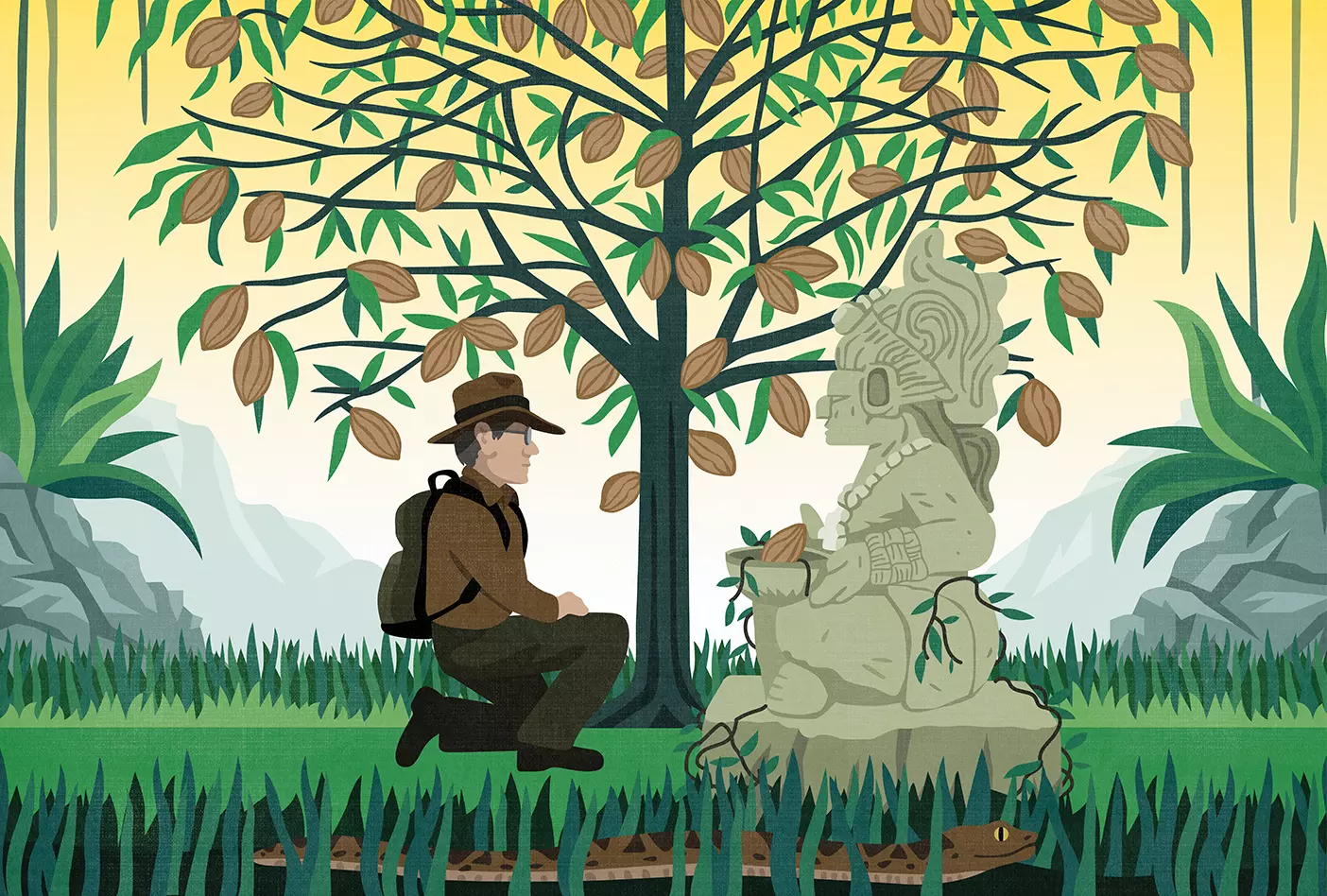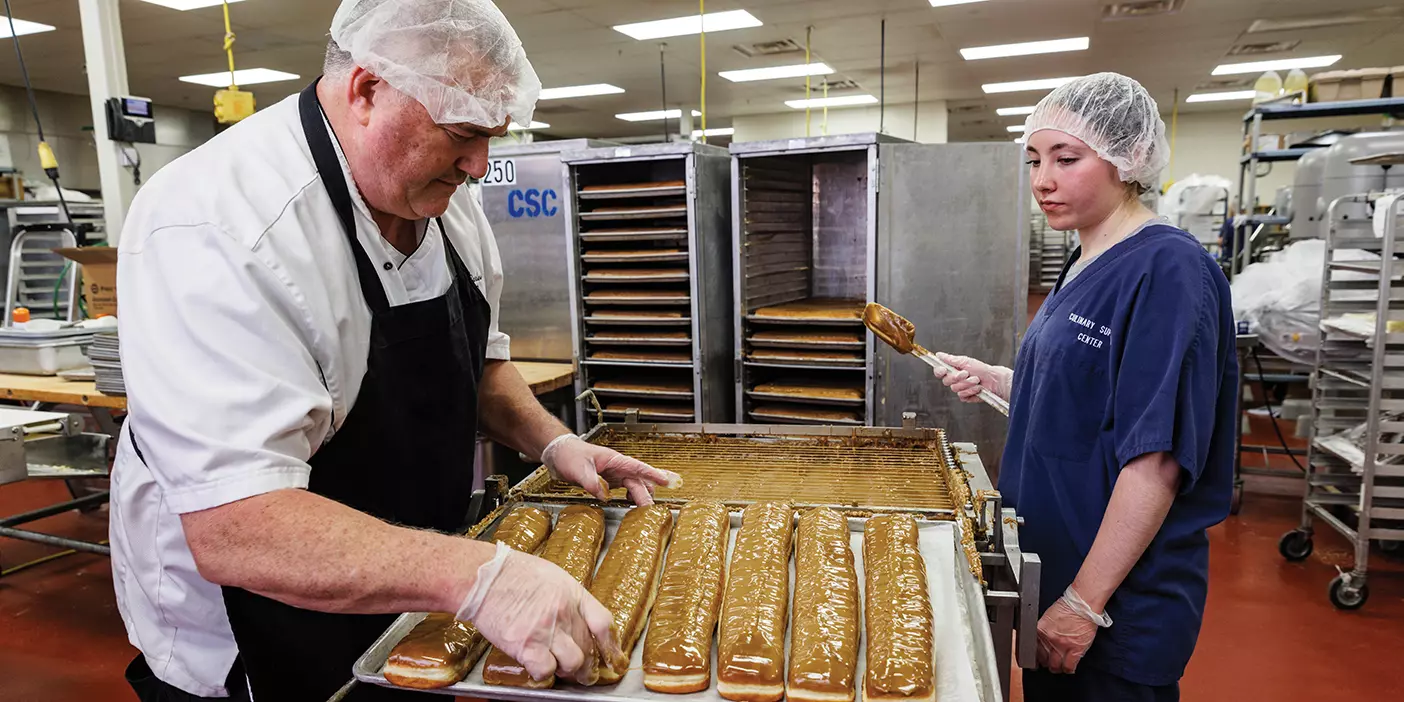
Rappelling 50 feet into sinkholes in the Mexican jungle, guarding against killer bees and the aggressive fer-de-lance snake, discovering ancient ruins—it sounds more like an Indiana Jones movie than academic research.
But it was just such an adventure that yielded recently published research by BYU emeritus professor Richard E. Terry (BS ’72) and environmental-science grad students Bryce M. Brown (BS ’15, MS ’16) and Christopher S. Balzotti (BS ’07, MS ’10). It was all in search of cacao—the plant chocolate comes from.
Cacao beans were more than beloved to the ancient Maya who lived in the Yucatan Peninsula, Terry notes. They were sacred and were even used as currency. Even so, researchers had no idea where the Maya actually kept the sacred cacao groves.
“Cacao only grows in extremely humid, hot climates,” says Terry. The peninsula fits the bill for only half the year; outside of the rainy season, it’s too dry. To solve this puzzle, in 2013 Terry and his students joined with US and Mexican archaeologists to search for signs of the ancient groves.
Descending into a sinkhole near Coba, an archaeological site south of Cancun, the team stumbled across an ancient stone staircase and artifacts, including ceramic cacao pods used in ceremonial incense burning. Soil samples were tested and found to have traces of theobromine—a cacao biomarker.
Sinkholes, the team discovered, provided the perfect combination of shade, heat, and humidity for cacao trees. Balzotti says he was intrigued by “the ingenuity of the Maya people to be able to grow this high-value sacred plant in areas that otherwise don’t support it.”
Watch a video featuring BYU’s pastry chef on the beauty of chocolate below:












